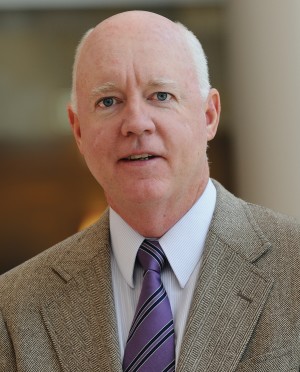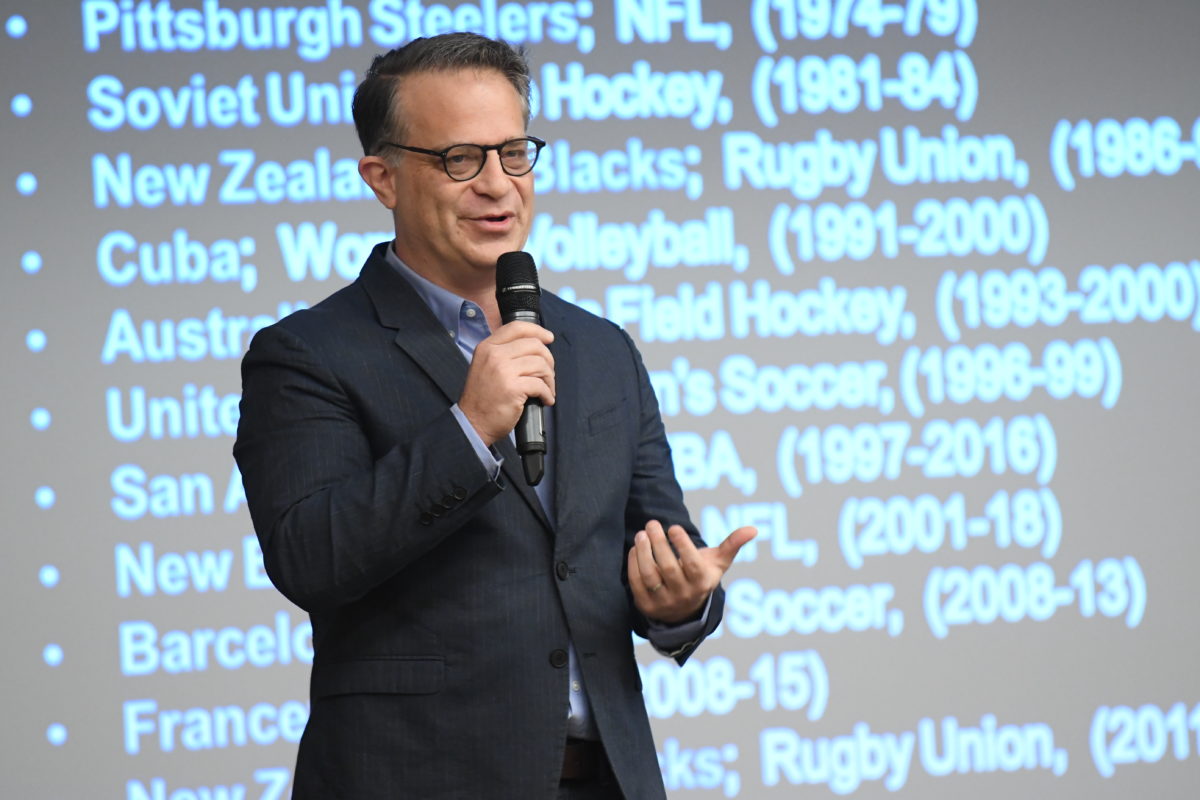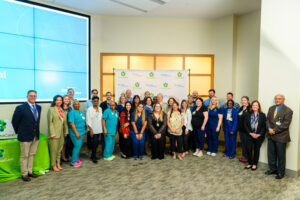Whether they practice in the operating room, a primary care office or in physical therapy, Delaware’s experts in bone and muscle disorders are sharing the latest science around reducing pain and restoring function.

Nearly 200 orthopedic surgeons, physical therapists and others joined nationally recognized experts in orthopedic medicine at the 11th Annual Delaware Orthopaedic Symposium, Oct. 27 at Christiana Care Health System. The symposium is a collaboration between the Delaware Society of Orthopaedic Surgeons and Christiana Care’s Department of Orthopaedic Surgery.
Brian J. Galinat, M.D., MBA, a course director of the symposium and former chair of the Department of Orthopaedic Surgery, said this year’s symposium represented a high-water mark both in the quality of its keynote speaker and the prestige of its medical lecturers. Here are his top five takeaways from the symposium:
1 . Great teams don’t happen without great leaders
The symposium’s keynote speaker was Sam Walker, author of “The Captain Class: The Hidden Force That Creates the World’s Greatest Teams.”
Walker deftly tied the theme of his book — that exceptional, selfless captains are at the core of the greatest teams — to the health care setting.
“Health care, including surgery, is a team sport, and all the members of that team benefit when somebody is regularly going above and beyond for the good of the patient,” Dr. Galinat said. “Inspired leadership can dramatically increase the effectiveness of every member of that team, whether it’s playing basketball or treating patients.”
2. Data you can hang your ACL on
One of the most common but devastating injuries faced by athletes is a sprain or tear of the anterior cruciate ligament, or ACL, which connects the femur to the tibia.
Sports medicine surgeon Rick Wright, M.D., president of the American Orthopaedic Association and executive vice chairman of the Department of Orthopaedic Surgery at the Washington University School of Medicine in St. Louis, spoke about his multi-site trial that collected data on 1,200 consecutive ACL revision surgeries. The study’s size was unprecedented; its number of patients exceeds those in all of the studies done up to that point.
One of the key lessons from Dr. Wright’s talk is the difficulty surgeons face in knowing which elements of an ACL revision surgery are most highly correlated with positive outcomes.
“This is valuable data for community orthopaedic surgeons, who often develop impressions about ACL surgery from their relatively small number of cases,” Dr. Galinat said.
The surgeon also shared numerous other lessons from the study, including the superiority of allograft tissue, which is taken from the patient’s own body, over cadaver tissue.
This summer, Dr. Wright was elected to serve as president of the American Board of Orthopaedic Surgery. His second talk at the symposium concerned forthcoming improvements to the board certification process.
3. Respectful dialogue between physical therapists, surgeons remains a Delaware norm
As physical therapists have earned more autonomy and expertise over the past few decades, these professionals in Delaware have continued to see their relationship with surgeons as complementary rather than competitive, Dr. Galinat said.
At the symposium, six local orthopaedic surgeons helped continue that tradition by meeting with a roomful of physical therapists for an informal question-and-answer session.
“We wanted to talk about what we both can do better, and we hope the conversations we started that morning will continue long after the symposium,” Dr. Galinat said.
The University of Delaware Department of Physical Therapy, named the top graduate program in the nation in 2017 by U.S. News and World Report, has a history of being a bridge between orthopaedic surgeons and physical therapists in this state, he said.
4. Latest joint replacement data may change surgeries on hips, shoulders
Joint replacement surgeries are some of the most common and rapidly changing procedures in orthopaedic medicine. Eric Hume, M.D., associate professor of clinical orthopaedic surgery at the University of Pennsylvania, spoke about the important role of ceramic parts in hip-replacement surgery, and circumstances in which they may be superior to metal parts.
Jeff Abrams, M.D., past president of the American Shoulder and Elbow Surgeons, suggested that the reverse total shoulder replacement — in which the order of the normal ball-and-socket joint is reversed so that the socket is attached to the humerus and the ball affixed to the socket — is being used too often.
“Patients without the muscle to stabilize a regular joint may benefit from this newer technique, but surgeons should be aware of its unique drawbacks, as well,” Dr. Galinat said.
5. It’s really a two-day event
It’s no coincidence that the Arthritis Foundation’s Bone Bash is a day before the orthopedic symposium, as both have cemented their back-to-back schedule over the last weekend of October. Over the Bone Bash’s nine years it has raised more than $400,000 for the foundation’s mid-Atlantic chapter.
Dr. Galinat, who has been in private practice in Delaware since 1989, was this year’s medical honoree.
“Orthopedic surgeons like to dress up for a good cause, and we’re already queued up for next year,” he said.



